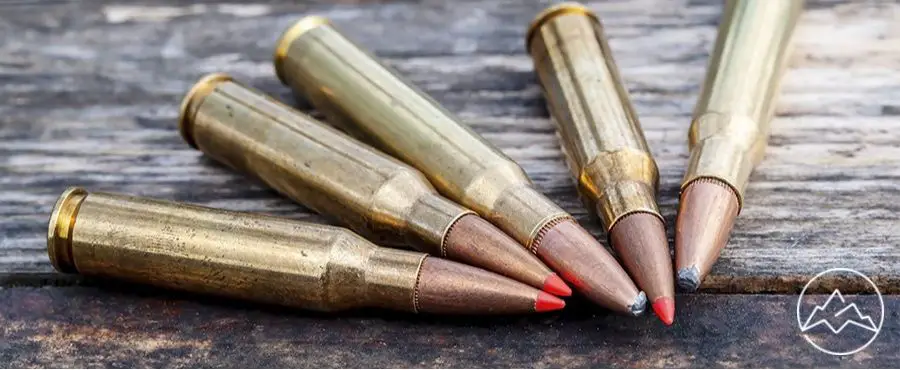Understanding a rifle caliber is surprisingly tricky. Thanks to the stubborn existence of the imperial measurement system, there are usually two different measurements for the same caliber: inches and millimeters.
While two rifles might have the same caliber, they may take entirely different ammunition. The length, weight, and mass of a bullet vary even if they have the same caliber. Thus, that box of .22 ammo sitting on your shelf won’t necessarily fit all of your .22 caliber rifles, or handguns.
Below is a guide to help you better understand rifle calibers.
Common rifle calibers
While rifles come in many different calibers, some are much more prevalent than the rest. There isn’t just one common caliber, as the list below indicates:
- .22LR – the most common rifle caliber in the world, half of all ammunition produced in the US is .22 caliber.
- .30-30 Winchester – a descendant of the “gun that won the west,” this is the most popular deer hunting rifle caliber. The extra 30 indicates the weight of the bullet, which is 30 grains.
- .243 Winchester – one of the most powerful calibers under .3, these rifles are capable of taking larger game such as deer or coyotes as the case comes from a .308.
- .223 Remington – this rifle has a .22 caliber barrel, but the length of the ammunition is much longer and has more power than a regular .22.
- .30-06 – this rifle caliber has acquired the 06 because it was invented in 1906. A popular all-around hunting rifle caliber, this gun has seen action in battle, as well.
Of course, there are much larger caliber rifles such as the .458 and even .50 that would likely decapitate a rhinoceros. However, their lack of widespread use makes them more of a novelty compared to the widely used rifles, above.
Headed to the shooting range? Check out our top picks for the best gun range bags.
Rifle caliber power
Typically, if a rifle is of a smaller caliber, then it will also be less powerful. However, this depends on the type of ammunition you put into it, as well. A list of calibers in order of power could go on forever; there are hundreds of calibers. The power of each rifle depends on several factors, such as the weight of the actual round and the exit velocity produced by the rifle. However, let’s take the .30-06 and Winchester .30-30. Both are .30 caliber rifles, but which is more powerful?First, it is important to note that many different rifle manufacturers produce rifles for .30-30 and .30-06 rounds. However, regardless of the maker, rifles firing these types of ammunition should behave the same.
A .30-06 round is much heavier and longer than a .30-30 round. Because a .30-06 is longer, that means it contains more powder or grains. A round with more powder will naturally be more powerful. Therefore, it is important to take the entire profile of the rifle caliber before deciding which is actually more powerful.
Cartridge vs bullet size
Rifle cartridges are not the same as rifle bullet sizes. A cartridge is the brass case that holds the other components of the round, including the bullet. The bullet is merely the projectile fired by the rifle, while the rest of the cartridge is ejected or detonated.The cartridge contains a propellant, which is either gunpowder or, more likely, an engineered mix of chemicals designed to discharge a bullet more effectively. At the tip of the cartridge is the actual bullet, or slug, that will hit the intended target. When the round discharges, the case remains and must be ejected by the shooter manually.
Depending on the rifle caliber, bullet size can vary significantly. A .22 can have a hollow point, a pointed nose, or even a round nose. The length of the case can vary, and the amount of propellant, therefore, can vary as well. While all of these rounds will likely be less powerful than a .243, a hollow lead point in a .22 won’t be far behind in terms of power.
FAQs About Rifle Calibers
What is the difference between .22 long rifle and .223 caliber?
How does a larger caliber affect accuracy and range?
What type of rifle ammunition is best for hunting small game?
How do you choose the right size bullet for your rifle barrel?
Are more powerful calibers more prone to misfires than smaller ones, and if so why?
Final thoughts
If you are still confused, consult one of the numerous rifle caliber charts online, or at your local firearms dealer. The most important thing to remember is that the caliber of a rifle only refers to the diameter of the rifle’s bore.
Of course, ammunition must fit in a firearm, so at least part of the ammunition must also have a diameter matching the rifle’s bore. However, for every rifle caliber, there are many different types of rounds available with different characteristics. Thus, rifle owners should understand how they want to use their firearm, and what they want to shoot, before purchasing ammunition.




Trey, is caliber inches the actual diameter of the bullet or maybe the diameter of the gun’s bore? Also, how many bullet diameters are there for 22 calibers?
Thanks, Phil
I just did some research on this, and for caliber is for the bore. Please don’t waste time on my inquiry.
Thanks, Phil